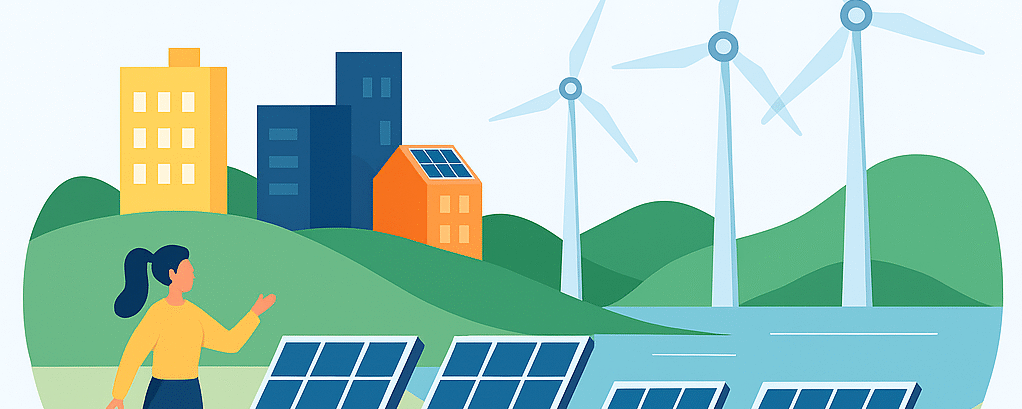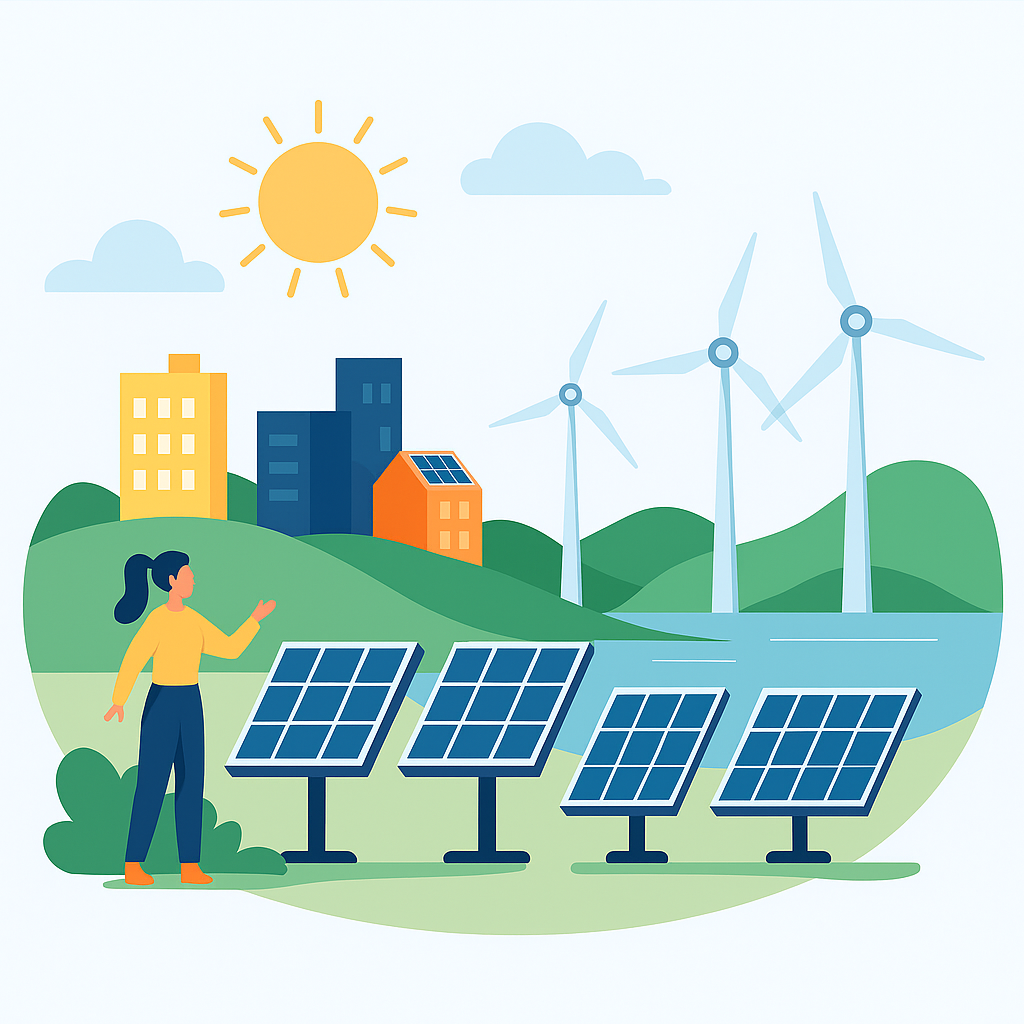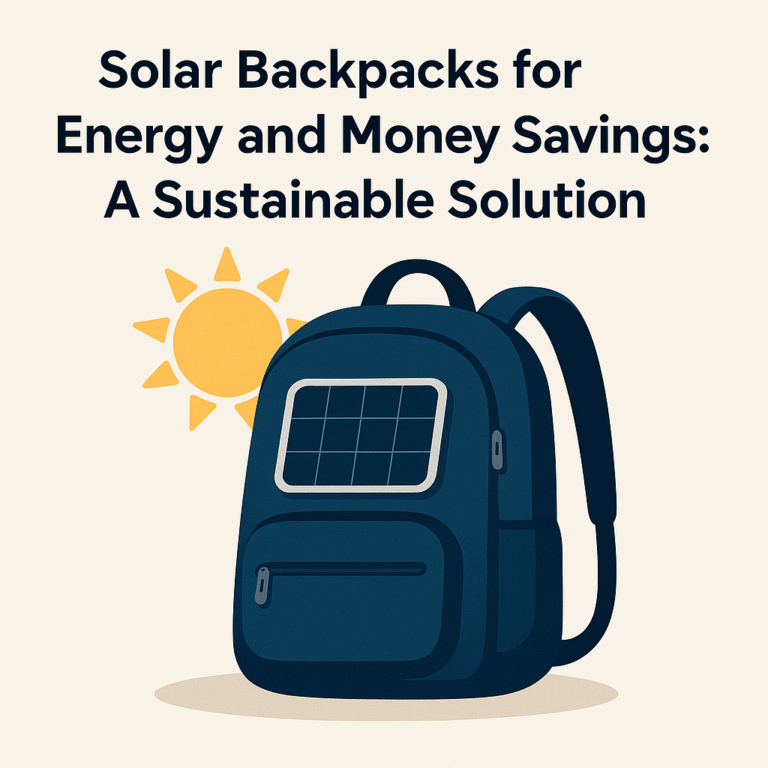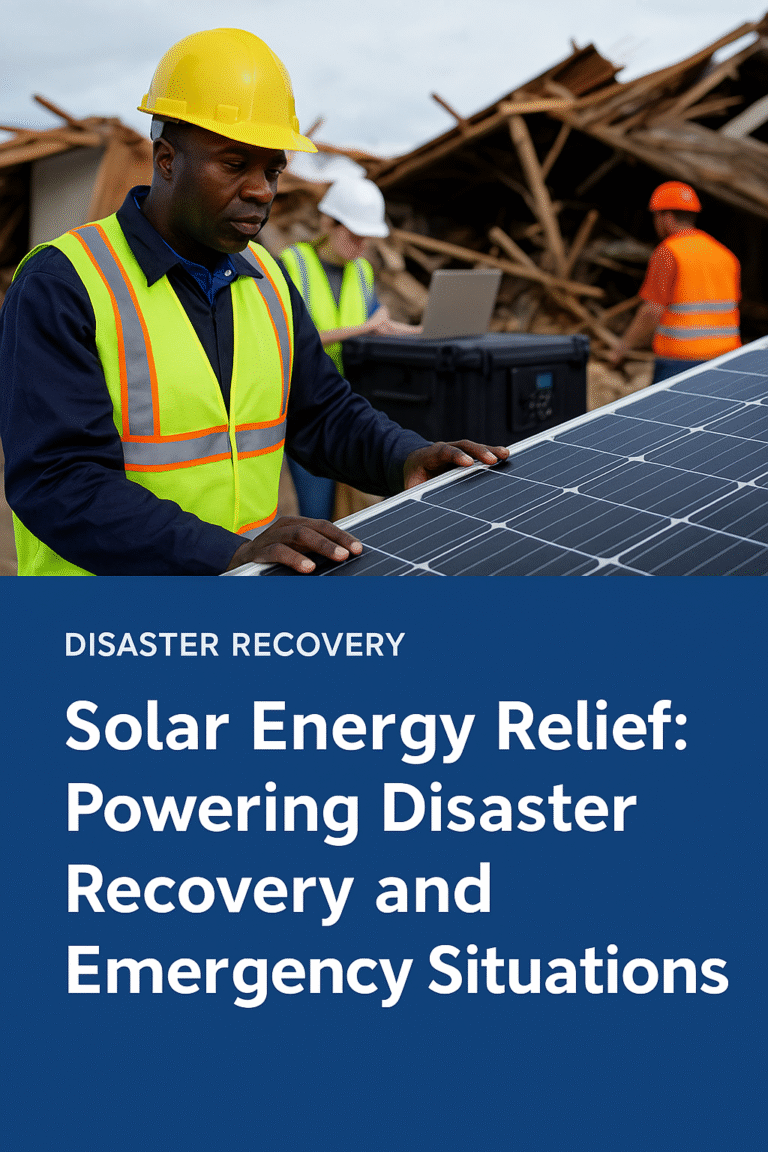Exploring Innovative Renewable Energy Solutions for Sustainable Future
Exploring Innovative Renewable Energy Solutions for Sustainable Future
The quest for sustainable energy has never been more crucial as we confront the daunting reality of climate change and diminishing fossil fuels. Our planet demands a shift towards cleaner, sustainable solutions, leading to innovative advancements in renewable energy. As we stand on the brink of a green revolution, innovation is paving our way to a brighter, more sustainable future.
Today’s renewable energy landscape is no longer limited to traditional wind and solar. Pioneers in the energy sector are exploring cutting-edge technologies such as floating solar farms, smart grids, and algae biofuels. These advancements promise to transform our energy consumption and contribute to a healthier planet.
Join us as we delve into these groundbreaking renewable energy innovations that hold the potential to power our world while preserving its delicate ecosystems for future generations. Together, let’s explore how these advancements are set to redefine what’s possible in sustainable energy solutions.
Revolutionizing Energy Generation Through Solar Innovations
In the quest for cleaner energy sources, solar power continues to lead the charge with innovative breakthroughs that are transforming how we harness the sun’s energy. Traditional solar panels have come a long way, but recent innovations are pushing their boundaries beyond rooftops and solar farms.
Floating Solar Farms
Floating solar farms are making waves by utilizing bodies of water to host solar arrays. These installations not only conserve valuable land space but also enhance efficiency by keeping panels cooler. Countries like China and India are already reaping the benefits of vast floating solar arrays, setting a precedent for the rest of the world. For more on solar innovations, check out this solar energy solution.
Building-Integrated Photovoltaics (BIPV)
Building-integrated photovoltaics (BIPV) are changing the face of architecture, allowing entire buildings to function as solar energy generators. From transparent solar windows to photovoltaic facades, BIPV blurs the line between aesthetics and energy efficiency. Explore this BIPV technology for more details.
Perovskite Solar Cells
Perovskite solar cells, still in the experimental phase, promise to dramatically increase efficiency and reduce costs. These lightweight, flexible cells could revolutionize solar technology, making it more accessible than ever. Learn more about this cutting-edge solar innovation.
Harnessing Wind Power: The Advancements and Challenges
Wind power generation has witnessed remarkable advancements, positioning it as a cornerstone of renewable energy strategies worldwide. From towering onshore turbines to innovative offshore farms, wind energy is evolving rapidly. But like any burgeoning technology, it faces its own set of challenges.
Offshore Wind Farms
One of the most exciting advancements in this sector is the deployment of offshore wind farms, where stronger and more consistent winds promise higher energy yields. Countries such as the UK and Denmark are leading the charge, utilizing floating wind turbines that can be placed in deep waters, unlocking vast swathes of untapped wind potential. Discover more about offshore wind energy.
Turbine Design Improvements
Technological improvements also focus on turbine design. Today’s turbines are equipped with longer blades and advanced materials, enhancing efficiency and reducing costs over their lifecycle. These innovations are pushing the boundaries of what’s possible in capturing the power of the wind. Check out this advanced wind turbine.
Challenges in Wind Energy
Despite these advancements, challenges remain. The intermittent nature of wind and the need for vast amounts of space are significant hurdles. Additionally, environmental impact and community acceptance are ongoing concerns that need careful consideration as more projects are planned. Learn more about overcoming these challenges here.
The Role of Hydroelectric Systems in Sustainable Energy Solutions
Hydroelectric power has long been a staple of renewable energy, providing a reliable source of electricity for over a century. As we strive toward a sustainable future, its role remains crucial due to its ability to deliver consistent, emissions-free power.
Small-Scale Hydropower Systems
Innovations in small-scale hydropower systems are redefining the landscape, allowing even low-flow water sources to generate electricity. These micro-hydro systems are opening up opportunities for communities in remote areas, providing them with access to clean, renewable energy without the need for large-scale infrastructure. Explore this small-scale hydropower solution.
Pumped-Storage Hydroelectricity
Pumped-storage hydroelectricity is another key player in enhancing grid stability. By storing surplus energy as potential energy in water reservoirs, it can be released during peak demand, serving as a natural battery that balances supply and demand. Learn more about this energy storage solution.
Environmental Impact
However, the environmental impact of large dams cannot be ignored. Ecosystem disruption and community displacement remain concerns that necessitate thoughtful planning and comprehensive environmental assessments. This challenge encourages ongoing advancements in technology and design to mitigate such impacts. For more on sustainable hydroelectric systems, check out this eco-friendly hydropower solution.

Exploring Bioenergy Sources for a Greener Tomorrow
Bioenergy is emerging as a versatile and sustainable solution in the quest for renewable energy. By converting organic materials like plant residues, animal waste, and even algae into energy, bioenergy provides a renewable source that significantly reduces greenhouse gas emissions compared to fossil fuels.
Algae-Based Biofuels
One of the most promising avenues in bioenergy is algae-based biofuels. Algae grow rapidly and have a high oil content, making them incredibly efficient at converting sunlight into energy. Unlike traditional biofuel crops, algae can be cultivated in wastewater or non-arable land, which means they don’t compete with food production. Discover more about algae biofuels.
Cellulosic Ethanol Technology
Also, advancements in cellulosic ethanol technology enable the conversion of non-food plant materials into ethanol, offering a sustainable alternative to gasoline. This technology transforms agricultural waste into fuel, effectively turning trash into treasure. Learn more about this innovative bioenergy solution.
Economic and Environmental Benefits
Bioenergy also brings economic and environmental benefits. It supports local economies by using regional resources and helps reduce waste disposal problems. However, challenges remain, including the need for technological advancements to improve conversion efficiencies and the sustainability of biomass sourcing. Explore this bioenergy solution for more details.
Fusion Energy: The Promising Future of Clean Power
Fusion energy stands out as a beacon of hope in the pursuit of limitless, clean power. Unlike traditional nuclear fission, which splits atoms, fusion energy aims to replicate the sun’s power by merging hydrogen nuclei to form helium, releasing vast amounts of energy in the process.
The Allure of Fusion
The allure of fusion lies in its potential to provide a nearly inexhaustible energy supply with minimal environmental impact. The primary fuel for this reaction, deuterium, is abundant in seawater, making it a sustainable resource. Additionally, fusion produces no long-lived radioactive waste, a significant environmental advantage over current nuclear technologies. Learn more about fusion energy.
Global Fusion Projects
Efforts to harness fusion energy have led to impressive progress with significant projects like ITER in France, which seeks to demonstrate the feasibility of fusion as a large-scale, carbon-free energy source. These global collaborations aim to overcome the formidable technical challenges, from achieving the necessary temperatures and pressures to sustaining stable reactions. Discover more about ITER and fusion energy.
Recent Breakthroughs
Despite these challenges, recent breakthroughs in magnetic confinement and laser-based approaches bring us closer to realizing the promise of fusion energy. While commercial fusion power plants might still be decades away, the pursuit of this technology underscores an important milestone on our journey towards clean and abundant energy for the future. Explore this fusion energy breakthrough.
Innovative Energy Storage Solutions for Renewable Sources
As renewable energy sources like solar and wind become more prevalent, the need for efficient energy storage solutions is paramount to ensure a reliable power supply. Energy storage systems are crucial for balancing supply and demand, managing fluctuations, and ultimately ensuring the seamless integration of renewables into the grid.
Advanced Battery Technologies
Lithium-ion batteries, the frontrunners in today’s market, are becoming increasingly efficient and cost-effective. Their success in electric vehicles is now transferring to larger grid applications, offering a nimble way to store energy during peak production and release it when demand rises. Learn more about advanced battery technologies.
Flow Batteries
Exploring alternative battery chemistries is also a focus, with flow batteries offering promising longevity and scalability for large-scale applications. These systems use liquid electrolytes to store energy, providing flexible and sustainable storage options. Discover more about flow batteries.
Compressed Air Energy Storage
Beyond batteries, innovative technologies like compressed air energy storage and flywheels are gaining traction. These solutions use surplus renewable energy to store energy in physical forms, like compressed air or kinetic energy, which can then be converted back into electricity on demand. Explore this compressed air energy storage solution.
Hydrogen Storage
Emerging solutions such as hydrogen storage involve transforming electricity into hydrogen fuel, which can be stored indefinitely and used to generate electricity, heat, or as fuel for transportation. Such advancements underscore the diversity and creativity being applied to solve one of renewable energy’s biggest challenges. Learn more about hydrogen storage.
Pioneering Wave and Tidal Energy Technologies
Harnessing the immense power of the oceans represents a promising frontier in renewable energy. Wave and tidal energy technologies aim to capture the kinetic and potential energy from ocean movements, offering a consistent and predictable energy source.
Wave Energy Converters
Wave energy converters are designed to capture the energy from surface waves. These technologies come in various forms—such as point absorbers, oscillating water columns, and attenuators—each tailored to different wave conditions and environments. The modularity and adaptability of these systems allow them to be deployed across diverse geographic locations. Discover more about wave energy converters.
Tidal Energy
Tidal energy, on the other hand, leverages the gravitational pull of the moon and sun to generate electricity from tidal movements. Tidal turbines are similar to underwater wind turbines and are placed in areas with strong tidal currents. The predictability of tidal cycles provides a distinct advantage over other renewable sources, offering reliable power generation. Learn more about tidal energy.
Challenges in Oceanic Environments
Despite the potential, these technologies face challenges due to harsh marine environments. Saltwater corrosion and mechanical stresses require durable materials and innovative designs. Researchers are exploring advanced materials and coatings to improve longevity and efficiency. Explore this ocean energy solution.
The Bottom Line: Embracing Diverse Renewable Energy Paths
As we navigate the complexities of energy transition, it’s clear that relying on a single solution won’t suffice. Instead, we must embrace a diverse array of renewable energy technologies, each contributing its unique strengths to create a sustainable and resilient energy ecosystem.
Solar and wind power have already made significant strides in reducing our dependence on fossil fuels, leading the charge with their decreasing costs and technological advancements. Meanwhile, bioenergy and hydroelectric power ensure continual progress as they harness natural processes to generate energy with minimal impact.
The potential of groundbreaking technologies like fusion energy and innovative storage solutions cannot be overlooked. While still in development, these innovations promise to transform how we generate and store energy, paving the way for a cleaner future.
Wave and tidal energy offer exciting prospects, expanding our renewable portfolio by capturing the relentless energy of our oceans. By exploring these untapped resources, we can further ensure the stability and security of future energy supplies.
Ultimately, the path to sustainable energy lies not in choosing one over the other but in leveraging the collective strengths of diverse renewable sources. It’s essential to invest in research, policy, and infrastructure to support these varied technologies, facilitating their integration into our everyday energy systems.
This multifaceted approach not only helps mitigate climate change but also promotes energy independence and economic growth. By embracing the full spectrum of renewable energy solutions, we move closer to a sustainable, energy-secure future for generations to come.






